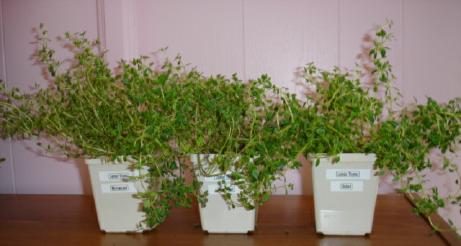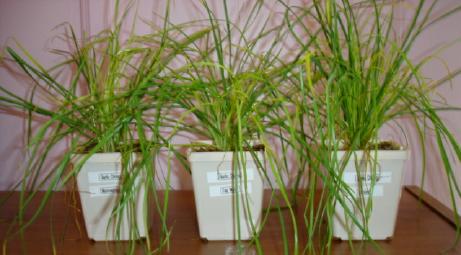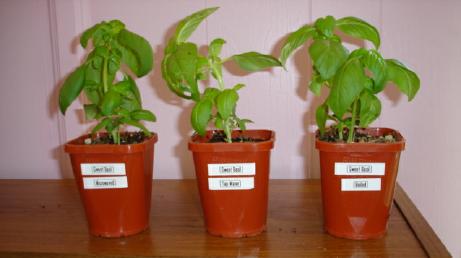有人試過了。
傳微波爐水讓植物無法生長記者實驗辟謠-新聞頻道-華商網
Jun 30, 2014 - 微波爐燒的水含有害物質,讓植物喪失活性,澆花花死,泡豆子發不了芽。為此,《
美國的:
http://www.snopes.com/science/microwave/plants.asp
Origins: The introductions of new, widely-adopted technologies are often accompanied by fears of possible deleterious effects from the use of such devices, everything from concerns that telephones would spell the end of regional accents to parental admonitions not to sit too close
to the television (lest you ruin your eyes!). Usually these fears are largely allayed after a few years, as the technologies improve and become ubiquitous, and evidence of the feared negative effects fails to materialize. Nonetheless, even though the microwave oven has been a standard household appliance for several decades now, rumors continue to linger that microwaves somehow "change the molecular structure" of consumables and therefore make food products heated in them unsafe to eat. The sample "experiment" represented above is an expression of that sort of rumor, but it is pure junk science, both in its methodology and its conclusions.
First of all, water heated in a microwave oven is no different in "structure or energy" than water heated with a gas flame, on an electric stove, or over a wood fire: It's just water, plain and simple. More important, though, is the awareness that drawing valid scientific conclusions from experimentation involves conducting multiple trials under carefully controlled conditions, something not in evidence here. The extraneous factors that could have produced the exhibited results (i.e., one live plant and one dead plant) exhibited above are legion. For example:
As evidenced by the photos below (taken while the plants were briefly removed from the environment in which they were tended and placed in a setting better suited to photography), at the end of that time period all three plants in each set were fairly thriving. When a non-participating observer was asked to indicate (blindly) which plant in each set he thought had fared the best, in two cases he selected plants that had been given microwave-boiled water, and in one case he selected a plant that had been given unboiled water:



Read more at http://www.snopes.com/science/microwave/plants.asp#GPVXzl8fcybBxOq6.99
美國的:
http://www.snopes.com/science/microwave/plants.asp
Origins: The introductions of new, widely-adopted technologies are often accompanied by fears of possible deleterious effects from the use of such devices, everything from concerns that telephones would spell the end of regional accents to parental admonitions not to sit too close
First of all, water heated in a microwave oven is no different in "structure or energy" than water heated with a gas flame, on an electric stove, or over a wood fire: It's just water, plain and simple. More important, though, is the awareness that drawing valid scientific conclusions from experimentation involves conducting multiple trials under carefully controlled conditions, something not in evidence here. The extraneous factors that could have produced the exhibited results (i.e., one live plant and one dead plant) exhibited above are legion. For example:
- One plant could have been compromised from the very beginning and would have died even if both plants were treated alike.
- The container used to store or boil the microwaved water could have introduced a residual substance into the water that hindered plant growth.
- The soil or bedding material used for one of the plants might have contained something (either originally or introduced later) that hindered plant growth.
- The two containers of water might have been heated and/or cooled unequally, resulting in one plant's receiving warmer water than the other.
- The plants might have been subject to differing environmental factors (e.g., light, heat) due to their placement, or affected differently by external factors (e.g., insects, pets).
- Since the experiment was not conducted "blindly," the possibility that the experimenter in some way influenced the results cannot be ruled out.
As evidenced by the photos below (taken while the plants were briefly removed from the environment in which they were tended and placed in a setting better suited to photography), at the end of that time period all three plants in each set were fairly thriving. When a non-participating observer was asked to indicate (blindly) which plant in each set he thought had fared the best, in two cases he selected plants that had been given microwave-boiled water, and in one case he selected a plant that had been given unboiled water:



Read more at http://www.snopes.com/science/microwave/plants.asp#GPVXzl8fcybBxOq6.99
